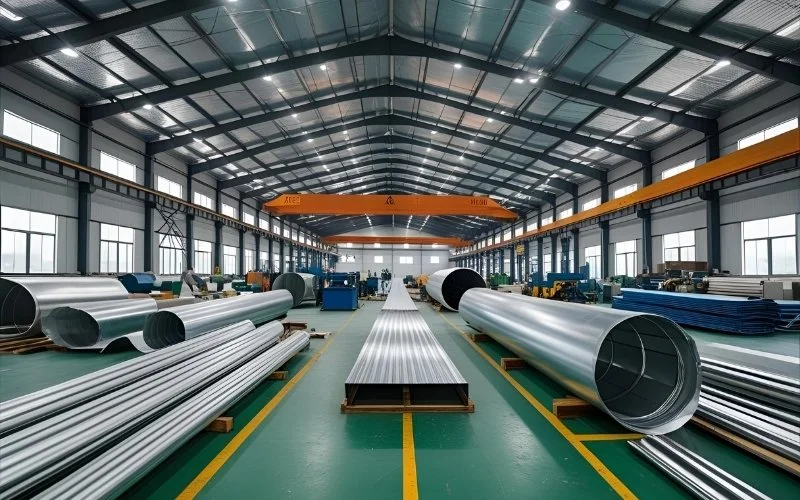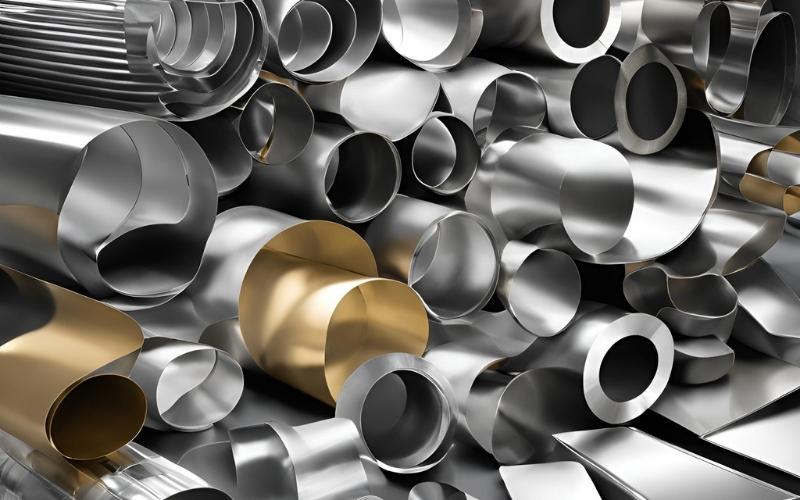Sheet metal ducts play an essential role in HVAC systems, ensuring efficient airflow and maintaining optimal indoor air quality. These components, often overlooked, are the backbone of modern ventilation, heating, and cooling setups. In this guide, we leverage ABC Vietnam’s expertise to walk you through the intricacies of sheet metal duct fabrication. Whether you are a professional fabricator or a DIY enthusiast, this article offers actionable insights and best practices.
What is Sheet Metal Duct Fabrication?
Sheet metal duct fabrication involves designing, cutting, shaping, and assembling metal sheets to create custom HVAC ducts. These precision-engineered ducts are a crucial part of air distribution systems, ensuring that conditioned air flows effectively through residential, commercial, and industrial spaces. This ensures optimal ventilation, heating, and cooling, contributing to indoor air quality and thermal comfort.
The primary purpose of sheet metal duct fabrication is to create energy-efficient, durable, and corrosion-resistant ducts that are customized for specific spaces. By using materials like galvanized steel and applying advanced techniques, we can maximize airflow efficiency and minimize energy loss. Unlike prefabricated ducts, custom-fabricated systems offer a seamless fit, supporting superior thermal efficiency and performance. Depending on project needs, these ducts can be made in rectangular, spiral, or round shapes, and often include features like insulation and sturdy connectors to enhance their durability and functionality.

Sheet Metal Duct Fabrication Process
Fabricating sheet metal ducts involves a series of precise steps, each requiring specialized skills and equipment.
Measuring and Layout
Accurate measurements are paramount. Technicians use precise measuring tools like tape measures, rulers, and protractors to mark the sheet metal according to the design specifications. Careful attention to detail during this stage minimizes material waste and ensures proper fit.
Cutting
After that, various cutting methods are employed based on the material thickness and desired shape:
- Plasma Cutting: Used for intricate cuts and thicker materials.
- Shearing: A quick and efficient method for straight cuts.
- Nibbling: Creates complex shapes using a nibbler tool.
Bending and Forming
Specialized machines, such as press brakes and rollers, are used to bend and shape the cut sheet metal pieces into the desired duct configurations. Precise angles and curves are achieved using carefully calibrated equipment and skilled operation.
Assembling the Duct Sections
The formed pieces are joined together using various techniques:
- Welding: Creates strong, permanent joints. Different welding methods are used depending on the material.
- Riveting: A cost-effective method for joining thinner-gauge metals.
- Mechanical Fasteners: Screws and bolts offer flexibility and ease of disassembly.
Technicians must perform quality control checks throughout the assembly process to ensure structural integrity and airtight connections.
Finishing
Finally, finishing processes like powder coating or painting protect the ductwork from corrosion and enhance its appearance.
The Materials Used in Sheet Metal Duct Fabrication
Choosing the right sheet metal is fundamental to a successful ductwork system. Several factors, including the intended application, environmental conditions, and budget, influence this decision. Here’s a breakdown of common sheet metal types and their applications:
| Material | Properties | Cost | Ideal Applications |
| Galvanized Steel | Durable, excellent corrosion resistance, strong | Moderate | General HVAC systems, residential ductwork, and low-corrosion environments |
| Aluminum | Lightweight, high corrosion resistance, good formability | High | HVAC systems in marine environments, specialized industrial applications |
| Stainless Steel | Superior corrosion resistance, high strength, long-lasting | Expensive | High-corrosion environments, chemical processing plants, cleanrooms, and pharmaceutical facilities |

Why is Custom Sheet Metal Duct Fabrication Important?
Custom fabrication offers several advantages over off-the-shelf or prefabricated solutions. Here’s why it’s crucial:
Improved Airflow Efficiency
Custom ducts are designed to fit perfectly into the space they serve, ensuring there are no gaps or misalignments. This precision helps maintain consistent airflow and reduces energy waste.
Reduced Energy Costs
When ducts are tailored to a system’s specific requirements, air leakage is minimized. This reduces the workload on HVAC units, leading to lower energy consumption and cost savings.
Enhanced Durability
Fabricated ducts are often made with high-quality materials, ensuring they last longer and require fewer repairs or replacements compared to prefabricated options.
DIY vs. Professional Duct Fabrication: Making the Right Choice
While simple ductwork modifications might be tackled by experienced DIYers, complex fabrication projects are best left to professionals. Professional fabricators possess the expertise, specialized equipment, and knowledge of industry standards necessary for creating high-quality, efficient, and code-compliant ductwork.
| Criteria | DIY | Professional |
| Cost | Potential cost savings | Higher initial cost but superior quality and longevity |
| Risk | Risk of errors and inefficiencies | Expertise and precision ensure optimal performance |
| Access to Tools | Limited access to specialized tools and equipment | Access to advanced machinery and technology |
| Time Efficiency | Time-consuming | Efficient and timely completion |
Conclusion
By understanding the intricacies of sheet metal duct fabrication, you can make informed decisions about your HVAC and ventilation systems. Whether you’re a homeowner, business owner, or facility manager, choosing the right materials, tools, and professionals is essential for ensuring optimal airflow, energy efficiency, and indoor air quality. Contact us today to discuss your sheet metal duct fabrication needs.
FAQs
Common materials include galvanized steel, aluminum, stainless steel (304/316), and occasionally coated steel. Galvanized steel is widely used for its corrosion resistance and affordability.
The thickness of sheet metal used for HVAC ducts depends on the application and system pressure. For residential HVAC systems, 26-gauge sheet metal (approximately 0.45 mm thick) is commonly used. In commercial or industrial settings, thicker gauges such as 24-gauge to 20-gauge (ranging from about 0.6 mm to 1.0 mm) are typical, especially where higher strength or pressure resistance is required.
The best material for ductwork depends on the specific environment and needs of the system. Galvanized steel is considered the most versatile and commonly used material due to its durability and corrosion resistance. Aluminum is ideal for humid or coastal environments thanks to its lightweight nature and natural corrosion resistance. Stainless steel is preferred for environments that demand high hygiene standards or exposure to corrosive substances, as it provides excellent chemical resistance and cleanliness.
